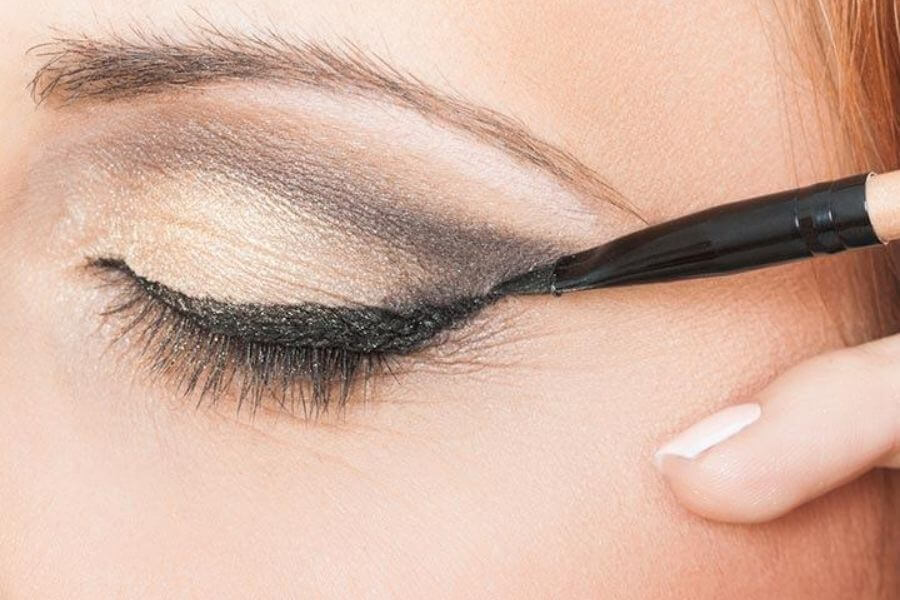Eyes are said to be the lamp of the body, and like house lamps, we take them for granted until its dark. Eye problems are becoming very common nowadays due to multiple reasons. Taking good care of your eyes is as important as taking care of other parts of the body. We will be focusing on a few useful tips for healthy eyes; after all, good eyesight will help you perform better at any task.
Common Eye Problems (Source CDC)
- Cataract
- Age-related Macular Degeneration
- Glaucoma
- Digital Eye Strain
- Tired Eyes
- Dry Eyes
- Blurred Vision
- Allergic Conjunctivitis
Useful Tips For Healthy Eyes
1. Eat Balanced Diet

Diet plays a quintessential role in maintaining a good vision of the eye. The balanced nutrient-rich diet reduces the risk of certain eye diseases.
- Vitamin A helps protect the cornea needed for clear vision. Deficiency of vitamin A can cause dry eye, corneal ulcer, night blindness, and vision loss. Yellow-orange colored fruits and vegetables are a good source of vitamin A.
- Lutein & Zeaxanthin carotenoids, found in dark green leafy vegetables such as spinach, kale, broccoli, egg yolk, decrease age-related macular degeneration (AMD) risk and development and progression of cataract.
- Vitamin C and Vitamin E are powerful antioxidants and protect eyes from free radicals as it is more susceptible to oxidative stress, mainly due to its exposure to light and high metabolism. Amla, orange, broccoli, guava are good sources of Vitamin C, whereas almonds, sunflower seeds, wheat germ oil, avocado are good sources of Vitamin E.
- Omega 3 fatty acid, mainly DHA found in fishes like salmon, tuna, and flaxseed improves retinal health and decreases the risk of high eye pressure. Omega 3 fatty acid also prevents diabetic retinopathy duty of its anti-inflammatory property.
- Staying hydrated helps in the lubrication of eyes, reduces eye strain.
2. Get Enough Sleep

Lack of sleep can cause red, dry, lazy eyes, headaches, and visual impairment. It is important to take 7-8 hours of quality sleep regularly for rejuvenation of eyes. Good sleep hygiene can help to get proper sleep. Also, consider taking power naps if faced with a busy schedule.
3. Reduce Screen Time

Blue light emission from devices makes eyes dry and irritated. Take a break from the screen whenever possible; maintain a proper distance between eyes and mobile or computer screen; install proper lighting. You can practice the rule of 20 (20 seconds breaks in 20 minutes and looking at something 20 feet away), making conscious efforts to blink often; using computer glasses are few measures to prevent Digital Eye Strain (DES).
4. Eye Exercises

There is little evidence on eye exercises that help to improve eye vision, but it may reduce eye strain. Moving eyes in the shape of figure 8, different eye movements, focus change exercises may prove helpful.
5. Use Protective Eyewear

Sunglasses protect eye damage from UVA and UVB rays from the sun. Wearing eye safety goggle while working on the field or playing certain games like swimming should be considered to protect the eye from dust, toxins, extreme light, etc
6. Avoid Rubbing Eyes

Rubbing or touching eyes with contaminated fingers makes the eye vulnerable to infections such as conjunctivitis. Continuous rubbing of the eye can result in thinning of the cornea.
7. Avoid Heavy Eye Makeup

Chemicals and preservatives in cosmetics can affect the tear film layer. Therefore, it is imperative to take up cosmetic removal routine and replace them from time to time. Do not overdo makeup on your eyes or leave it for the maximum numbers of hours.
8. Quit Smoking

Smoking is associated with various eye diseases such as glaucoma, age-related macular degeneration, and retinal damage leading to vision loss. Chemical in smoke breaks down the protective layer reduces the lubrication of eyes. Quitting smoking at any age can reduce your risk of developing many sight-threatening eye conditions.
9. Schedule Eye Appointment

Many eye diseases can be prevented and corrected at an early stage with regular eye check-ups. People with glasses, chronic diseases like diabetes, older age, at-risk adults, should have an annual eye examination. Children from the age of four and adults with no vision problem should check their eyes every two years.







